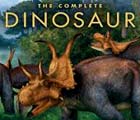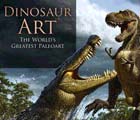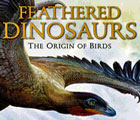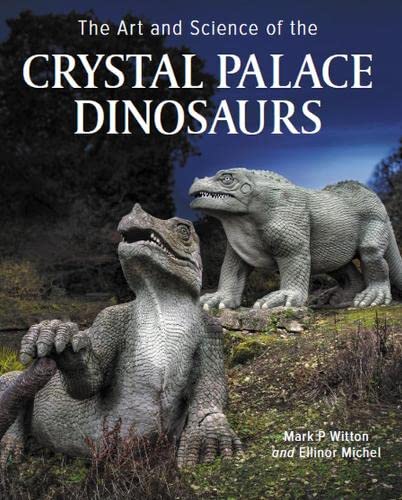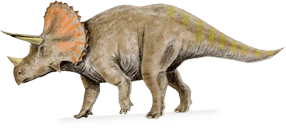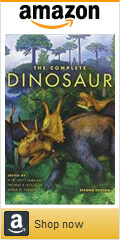Family Tree:
Animalia
(the animal kingdom)
Tetropoda
(critters adapted to life on land)
Amniota
(critters that lay eggs)
Diapsida
(snakes, crocs, lizards and birds)
Archosauromorpha
(closer to Archosauria than to lizards and snakes)
Archosauria
(pterosaurs, birds and crocs and their ancestors)
Avemetatarsalia
(closer to birds than to crocs)
Dinosauriformes
(dinosaurs and closest non-dinosaur relatives)
Dinosauria
(the dinosaurs, inc. birds)
Animalia
(the animal kingdom)
Tetropoda
(critters adapted to life on land)
Amniota
(critters that lay eggs)
Diapsida
(snakes, crocs, lizards and birds)
Archosauromorpha
(closer to Archosauria than to lizards and snakes)
Archosauria
(pterosaurs, birds and crocs and their ancestors)
Avemetatarsalia
(closer to birds than to crocs)
Dinosauriformes
(dinosaurs and closest non-dinosaur relatives)
Dinosauria
(the dinosaurs, inc. birds)
Pronunciation: DIE-no-SOR-ree-uh
Author: Sir Richard Owen
Year: 1842
Meaning: Fearfully Great Lizards
Locomotion: Bi and Quadrupedal (2 or 4 legs)
Synonyms: Eudinosauria (Novas, 1992), Deinosauria (Watson, 1957), Dinosauri (Bronn, 1851)
Author: Sir Richard Owen
Year: 1842
Meaning: Fearfully Great Lizards
Locomotion: Bi and Quadrupedal (2 or 4 legs)
Synonyms: Eudinosauria (Novas, 1992), Deinosauria (Watson, 1957), Dinosauri (Bronn, 1851)
[Sereno, 2005]Definition
The least inclusive clade containing Triceratops horridus and Passer domesticus (House Sparrow).
About
Coming soon...
Etymology
Dinosauria is derived from the Greek words "deinos" and "sauros". Owen translated the "deinos" of Dinosauria as "fearfully great", to evoke their size and majesty (in contrast to the "deinos" of Deinonychus, which Ostrom translated as "terrible", to evoke its wicked claws). The "sauros" part is a misnomer, because it means "lizard" and Dinosaurs are actually reptiles. But you can't be changing classical Greek on a whim, so all the tantrums in the world won't change the fact that "sauros" does not mean "reptile". Dinosaurs are the "Fearfully Great Lizards".
References
• Owen R (1842) "Report on British Fossil Reptiles" Part II". Report of the Eleventh Meeting of the British Association for the Advancement of Science. Held at Plymouth in July 1841. London: John Murray. pp. 60–204.
• Currie PJ and Padian K (1997) "Encyclopedia of Dinosaurs".
• Benton MJ (2004) "Origin and relationships of Dinosauria". Page 7-19 in Weishampel, Dodson and Osmólska (eds.) "The Dinosauria: Second Edition".
• Brett-Surman MK, Holtz Jr TR and Farlow JO (2012) "The Complete Dinosaur: Second Edition".
• Brusatte S (2019) "The Rise and Fall of the Dinosaurs: A New History of a Lost World".
• Hearn L and Williams AC de C 2019) "Pain in dinosaurs: what is the evidence?". Philosophical Transactions of the Royal Society B, 374: 20190370. DOI: 10.1098/rstb.2019.0370.
•
Benton MJ (2020) "Dinosaurs Rediscovered: The Scientific Revolution in Paleontology".
• Bonsor JA, Barrett PM, Raven TJ and Cooper N (2020) "Dinosaur diversification rates were not in decline prior to the K-Pg boundary". Royal Socirty open science, 7: 201195. DOI: 10.1098/rsos.201195
• Tahoun M, Engeser M, Namasivayam V, Sander PM and Müller CE (2022) "Chemistry and Analysis of Organic Compounds in Dinosaurs".
Biology, 11(5): 670. DOI: 10.3390/biology11050670
• Hone D (2022) "The Future of Dinosaurs: What We Don't Know, What We Can, and What We'll Never Know".
• Romilio A and Shao C (2023)
Analysing trackway-based speed calculations to infer dinosaur locomotive capabilities and behaviours". Historical Biology. DOI: 10.1080/08912963.2023.2251127.





